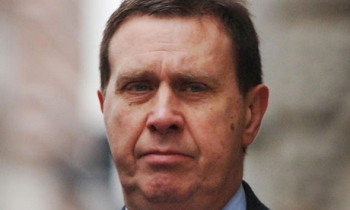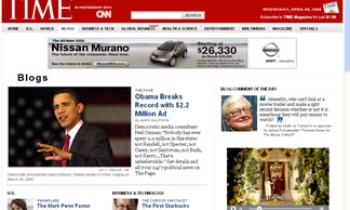Twenty-four of us had come together on a Saturday in January to form a public journalism society. About midway through this charter meeting of the Public Journalism Network, Chris Peck, editor of the Memphis Commercial Appeal, put his hands a foot apart and announced in somber terms that public journalism is on the verge of being "book-ended," with his right hand representing the movement's start in the early 1990s and his left representing its end in 2003. Even Jan Schaffer, who ran the Pew Center for Civic Journalism until it closed last spring, suggested that maybe it was time to leave the names "public" and "civic" behind and promote just their tenets.
Yet despite these words of caution, none of the journalists and academics in the room that day were ready to declare public journalism dead. And I, for one, am not interested in practicing its tenets under a new, less controversial name. For me, to rename public or civic journalism would be like dropping the name Protestant because it outraged the Catholics.
Some critics charged that money was the movement's motivating force. Indeed, the Pew Charitable Trusts spent millions to introduce the idea into newsrooms nationwide. The Pew money did a lot of good, but now that it's gone I can assure these critics that big money was never a motivating force. Passion, however, was, and it remains strong.
Almost without exception, the people who came to Kennesaw State University in Georgia in January were either compensated by their own institutions or paid their own way. All told, our charter meeting represented fourteen states, four continents, a dozen colleges and universities, seven newspapers, and one television station.
So it's puzzling to read criticism – like the April 16 column by Editor & Publisher's Allan Wolper, or the September 19 piece by Slate's Jack Shafer – that gleefully trumpets the death of public journalism and denies its valuable and enduring impact.
In truth, public journalism lives each day on the front pages of newspapers like the Savannah Morning News, in stories filled with the voices of real people and breakout boxes telling readers how to get involved or learn more about the issues at hand. Public journalism also lives in special projects such as "Building the New Wisconsin Economy," in which the Wisconsin State Journal and some twenty other media outlets around the state made a two-year commitment to engage the public in discussions about the state's economic development.
It lives, too, whenever an editor pushes a reporter for greater diversity in his sourcing, or to seek truths from the middle as well as the extremes. Or when media outlets open channels for readers and viewers to talk back to journalists, as The New York Times did this summer when it announced its intention to hire an ombudsman.
Gannett's Real Life, Real News initiative, publicized on Romenesko October 2 in a staff memo from Cincinnati Enquirer editor Tom Callinan, is about connecting with readers and solving community problems. Public journalism through and through.
These ideas are powerful enough to sustain a movement, even one that is only moderately funded. And even as old seed money disappears, new sources of nourishment – financial and otherwise – are sprouting. My endowed chair is dedicated to advancing public journalism. (It was funded by the family of the late Robert D. Fowler, former owner of the Gwinnet Daily News.) The Anniston Star will soon spin off the nonprofit Ayers Family Institute of Community Journalism, which, in cooperation with the University of Alabama, will be a laboratory where public journalism theories and practices can be conceived and tested.
In the August 26, 2002 New York Observer, Ron Rosenbaum wrote:
It's still important to 'follow the money,' as Deep Throat enjoined Woodward and Bernstein, in order to expose corruption and hidden agendas in politics; but it's equally important to 'follow the ideas' in order to expose the fallacies, the unexamined assumptions of conventional wisdom, the bogus expertise that often underlies politics and culture. But the hierarchy of J-school-approved subjects of investigation tends to reflect the hierarchy of the newspapers it was designed to serve, which reflects the hierarchy of the political system it reports on.
I do not know, nor care, where Rosenbaum stands on public journalism. The issues Rosenbaum raises are now part of the debate, thanks in part to the public journalism movement. They are ideas that must continue to be heard clearly, for they get at what needs to be fixed and what will make journalism better.









